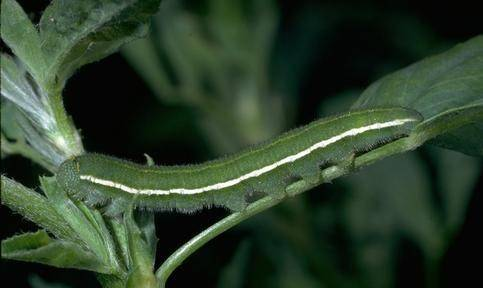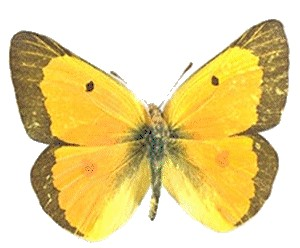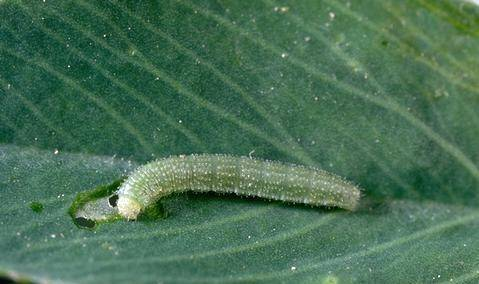Alfalfa Caterpillar
 Scientific Name
Scientific Name
Colias eurytheme
Hosts
Alfalfa.
Symptoms
Caterpillars, especially mature larvae, consume entire alfalfa leaves. High populations
usually result from a flight of butterflies into the field 
Description
Eggs hatch into green caterpillars in 3 to 10 days. Full grown caterpillars are up to 38mm long and are usually distinguished from other common caterpillars on alfalfa by their velvety green bodies and narrow, white stripe on each side of the body through which runs a fine, pale red stripe.
Control
Avoid unnecessary insecticide applications for aphids and weevils in the spring. This will help protect the population of natural enemies that parasitize and prey on the alfalfa caterpillars. In the summer, use insecticides that are selective against caterpillar pests, but do not affect natural predators or parasites.
Consider border strip harvesting to maintain populations of natural enemies. This involves leaving uncut strips of alfalfa at various intervals as a refuge for natural enemies. Note that this may affect quality of the hay cutting. The parasitic wasp Cotesia medicaginis may provide biological control of alfalfa caterpillars. When scouting fields, it is important to examine caterpillars for the presence of the parasite since parasitism affects the threshold for insecticide applications.
It may be possible to reduce alfalfa caterpillars by cutting a field early.
Please contact your local county extension office for additional information.


